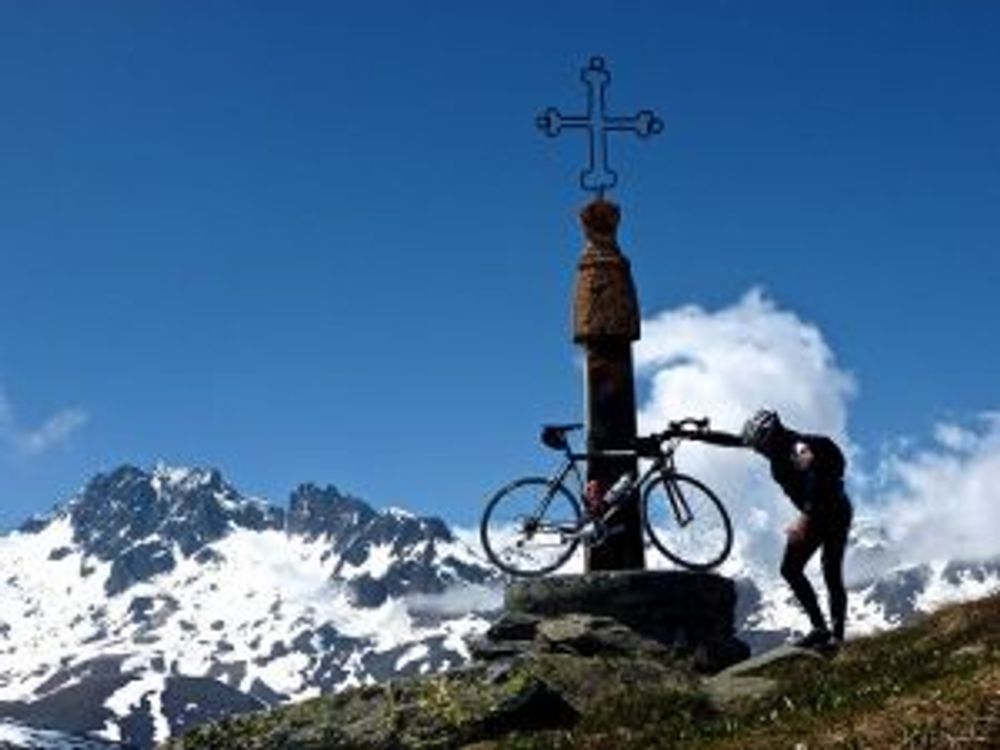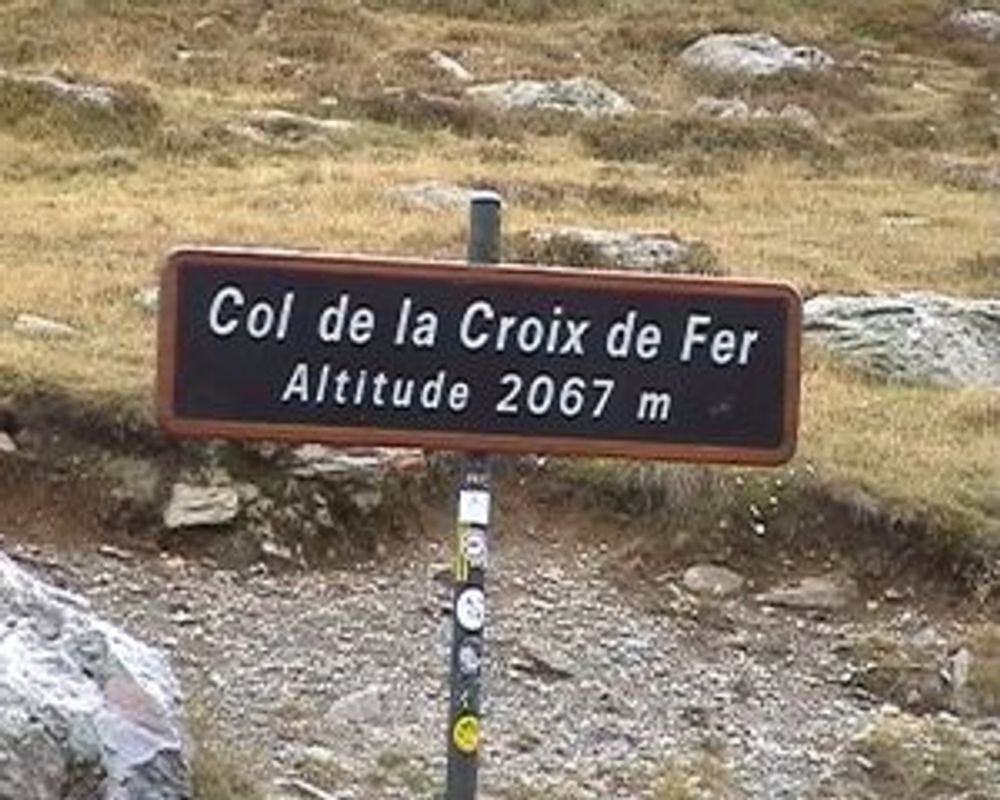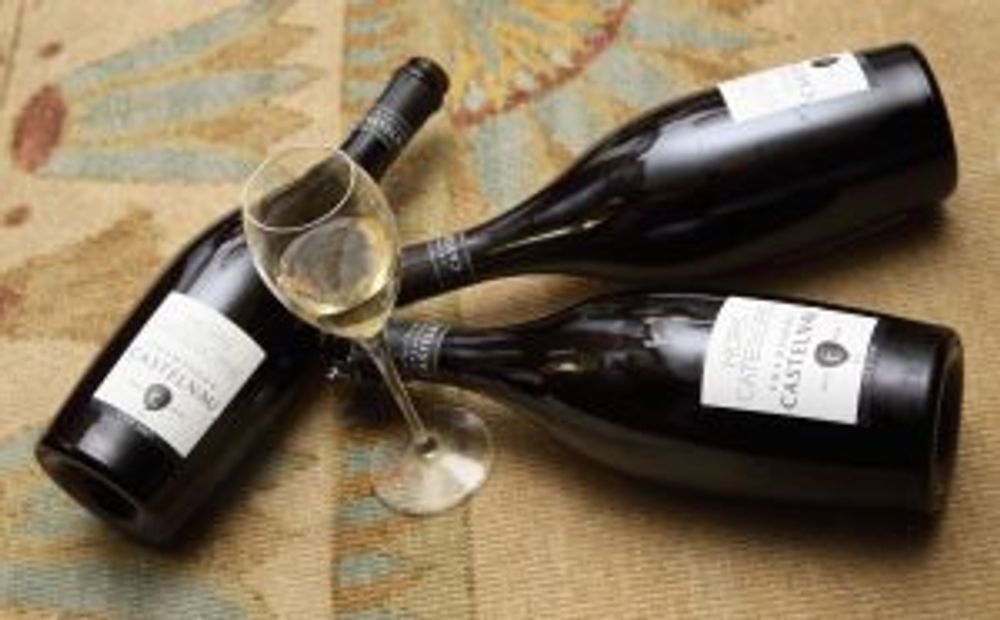CCF 2067 is a Pinot Meunier dominant blend unlike the previous release in the Castelnau Hors Catégorie range, CT 2115 that was dominated by Pinot Noir.

Author Stephen Vey after scaling the Col de la Croix de Fer, the second peak honoured by Castelnau
As a keen cyclist and oenophile it took me a nanosecond to accept the invitation from Buyer HQ to attend the London launch of Champagne Castelnau’s new cuvée of its Hors Catégorie premium champagne range. After due consideration, no lycra was worn.
Since 2012 Castelnau has been the official champagne of Amaury Sport Organisation (ASO), owners and organisers of the Tour de France, arguably the biggest annual sporting event on the planet.
This tie-up would seem an obvious choice for any brand looking to explore new export markets except that France’s Loi Evin prevents any visible advertising of alcohol. Consequently, it’s only the Tour’s large travelling entourage that has a chance to sample the goods in the hospitality suites at the end of each stage.


Pascal Prudhomme, MD of Champagne Castelnau, on the Col de Shaftesbury Avenue before the media launch
You could quibble about the efficacy of this arrangement but there can be no disputing that business is booming at Castelnau – with production on target to increase fivefold from 200,000 bottles in 10 years. Castelnau’s CEO Pascal Prudhomme (no relation by the way to Christian Prudhomme the general director of the TdF!) has overseen this growth and sees the TdF tie-up as an essential component of developing the brand as a luxury good.
Of course, most champagne houses have enjoyed strong sales growth driven particularly by buoyant export markets, notably the UK. However, NV Champagne increasingly finds itself in a battle to avoid a race to the bottom as it faces stiff competition from, and loses market share to, other sparkling wines notably Prosecco – what Prudhomme refers to as the “younger sexier competition.”
So, finding a way to carve out a niche in a market dominated by the Moëts and Clicquots of this world is hugely challenging and clearly Prudhomme believes that the TdF tie-up can help differentiate Castelnau in a complex and fast evolving market.
To celebrate this ongoing partnership, Castelnau has launched the second cuvée of its Hors Catégorie (HC) Champagnes called CCF 2067. HC means ‘beyond categorisation’ and refers to the longest and steepest climbs in the Alps and Pyrenees. Other less severe climbs are classed as category 1, 2, 3 or 4. Interestingly, this rating was historically determined by the car gear needed by the race organisers to reach the peak. HC meant that it was impassable for cars.

CCF stands for the majestic Col de la Croix de Fer where the road tops out at 2067 metres.
The wine itself certainly merited the launch hoopla being a fascinating blend of 2010 (85%) and 2011 (15%) base wines. Unusually, star billing is given to the unsung hero of champagne, the Pinot Meunier grape. The cuvée itself is made up of 45% Pinot Meunier, 35% Pinot Noir and 15% Chardonnay.
On the nose and on the palate, there is an expectation of far more Chardonnay than is the case but the absence of yeasty bread notes was indicative of the influence of the Petit Meunier. The wine has lovely elegance and poise and works perfectly as an aperitif. It has a notably delicate mousse, the result of using a deliberately lower pressure in the bottle – 5 bars compared to the normal 6.

It would have been interesting to contrast the CCF 2067 with the first Hors Catégorie release in 2016 called CT 2115 (referencing the legendary Col du Tourmalet) – a blend of 55% Pinot Noir, 28% Pinot Meunier and 17% Chardonnay, selected from 15 base wines from the 2008, 2009 and 2010 vintages. However, as with CCF 2067, less than 4000 bottles have been produced so stock is scarce.
In the intervening two years Elisabeth Sarcelet, Castelnau’s winemaker, has been trialling wines across the region, highlighting the potential in particular of Meunier from the Petit Montagne. This has taken well to experimentation with oak ageing, bringing lightness and texture to the blend before spending six years ageing on the lees.
So make no mistake there is some interesting wine making going on here and it will be fascinating to see how this style develops in the hands of such a capable winemaker, and which mountain is bestowed with the honour of the third HC cuvée – how about CAH 1860?










































